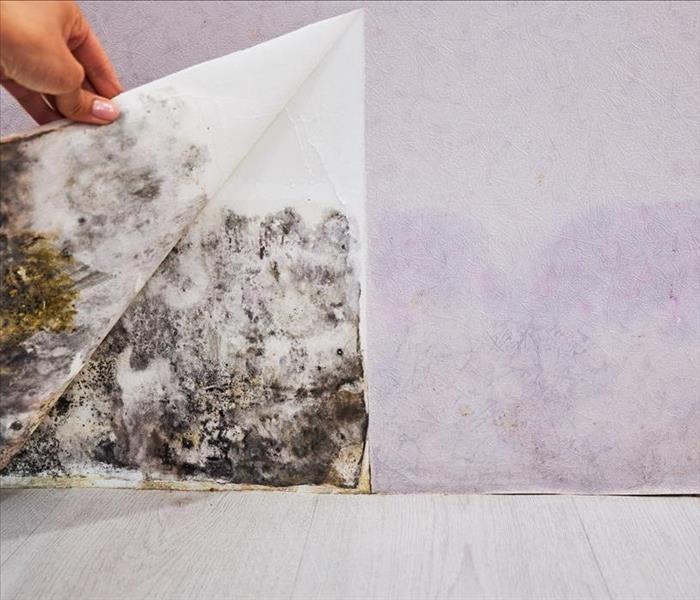What To Expect From Black Mold Remediation
11/19/2021 (Permalink)
When you spot black mold in your South Boston, VA, building, your next actions will either positively or negatively impact your property. Although mold is a natural part of the environment and can quickly take up residence in just about any environmental conditions, it can cause a lot of trouble for you as a property owner. You need professional mold remediation as quickly as possible.
6 Steps in the Treatment of Black Mold
If it isn't treated quickly, mold will spread through your building and may travel to other buildings on your property. Some of the following steps will be taken by professionals, and some are your responsibility:
1. Assessments and Reports
A mold inspector will complete a thorough assessment, test moisture levels, and check air quality. This professional will carefully document the type of molds in the area and determine how far mold colonies have spread. The completed report may be shared with you, your insurance agency, and the remediation company.
2. Prevention and Preparation
Before the mold cleanup crew arrives, there are a couple of things you should do. The first is to identify any problematic sources of water. Figure out whether a cracked pipe or a leaky air conditioner caused the black mold. A mold issue won't be fully resolved until the source of moisture has been corrected.
You also need to prepare a path to the affected area. Remediation crews often have a lot of equipment and will need to have plenty of room to maneuver.
3. Containment and Personal Protection Equipment
The cleanup and remediation process often releases mold spores from behind drywall or underneath carpeting. To prevent those spores from spreading throughout your building, technicians may put up plastic sheeting and close off the area where they are working. It's important that you keep the HVAC system turned off and limit any traffic through the affected space. Technicians may also wear boots, gloves, and other protective clothing to prevent the spread of spores.
4. Removal of Affected Materials
Any affected building materials that can't be cleaned will be removed from the building. This generally includes most porous items. Technicians may double bag drywall, carpeting, and other materials before disposing of them.
5. Cleanup and Disinfection
Mold cleanup crews may begin by applying a biocide to kill mold and prevent any further spread. Bleach is not a biocide. The chemicals used by professionals are approved by the EPA and may not be commonly available. After a waiting period for the biocide to kill the mold, crews will wipe up the mold or use specialized vacuums. The area may be repainted or whitewashed to seal the remaining materials and prevent new growth.
6. Time for Drying and Final Assessment
Once all of the treated surfaces have dried, the mold inspector will return to test for spores and to check air quality again. With the final assessment and reports complete and the original cause of mold growth has been corrected, it should be safe for people to return to the area. Black mold can cause a lot of damage in your building, but if you catch and treat it quickly, you can limit that danger and minimize any inconvenience.




 24/7 Emergency Service
24/7 Emergency Service
